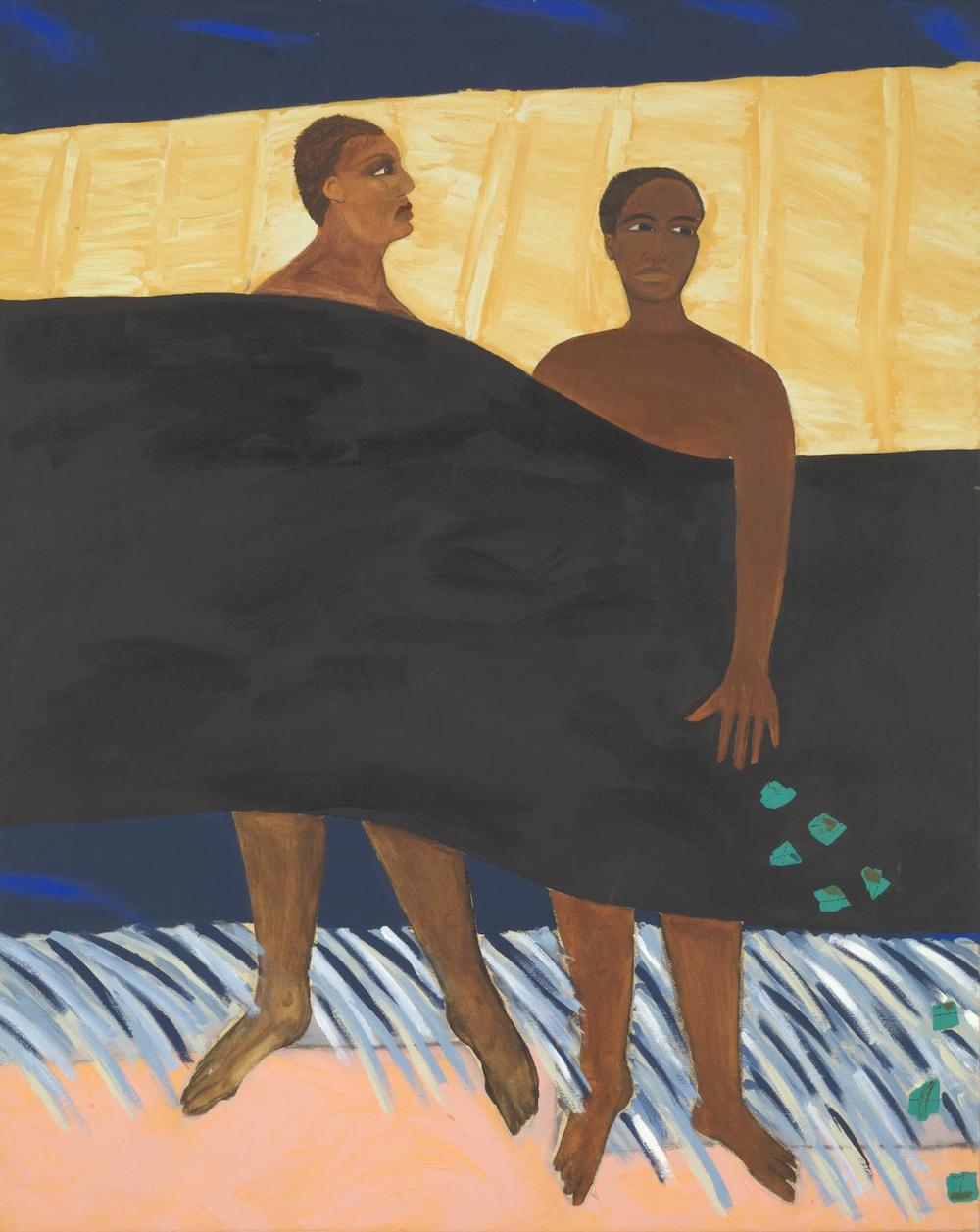Interlude - Lubaina Himid at Tate Britain
“Nobody paints our love stories, our ordinary everyday,” the British artist Lubaina Himid told an interviewer once. “How our ordinary everyday is touched by enormous trauma and tragedy but we as a whole set of women globally and historically have the capacity to keep going.”
Let’s look at Ankledeep, a Himid painting from 1991 that’s part of the Tate collection, and was on show in an artist’s room at Tate Britain right up until the virus hit, and the doors closed. Himid’s “us”, and main subject, is women, black women. This particular painting is part of a series, in which Hamid’s ordinary everyday women appear in pairs, against fantastic landscapes.

These two women are elegantly, collectively swathed in a black banner. They’re naked, but respectfully covered by the fabric. Another yellow swathe frames their heads. A more active pattern of blue and white, possibly flowing water, cools their feet. Ankle deep.
They’re watchful but calm, looking at something to their left. Some turquoise scraps are flowing in the same direction, from one of the women’s outstretched hands. And getting washed away.
Himid herself has explained what these scraps are: fragments of torn-up maps. Art historian Dorothy Rowe built on this, identifying the two subjects as Himid and her friend, and fellow artist, Maud Sulter. These “two black women [are] seeking their revenge from the fabric of history,” she wrote.
Why? “The women shred and scatter the colonial maps of the past before searching for new robes and debating new directions.” Those swatches of blacks and yellows are just the start.
Ankledeep is in the Tate’s permanent collection